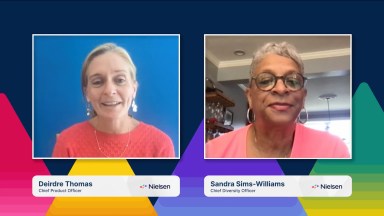For over 50 years, there was only a single “app” for TV viewers. It was an entertainment app whose sole function was to stream premium video content. Over the years, new versions of the app were released, including more channels, an interactive programming guide, higher definition displays, and the ability to record and playback programs. Viewers could customize their version of the app to some extent by negotiating with their app developer – that is, their cable or satellite company.
But regardless, the app still basically did the same thing. And it was available on just one screen: the TV set. Given that the broadcast and cable networks could not differentiate on the user experience, they focused on their one point of differentiation: the content they offered.
Every one of these facts of TV viewing no longer holds. There are now many TV viewing apps available. They can be viewed on many screens. And UX (user experience) is now an important source of differentiation in attracting viewers and capturing their attention and time. Behind these changes are a number of factors:
- The proliferation of broadband suitable for delivering premium video content
- The broad adoption of devices capable of displaying premium video content
- The connected nature of these devices, including TV sets themselves, enabling on-demand viewing
- The emergence of multi-channel video programming distributors (MVPDs) beyond the big cable companies (e.g., Hulu, Netflix, Amazon)
- A boom in high-quality video content, which can be produced with relatively cheap A/V equipment and editing tools
All of this is contributing to a wide range of TV experiences. Given that these experiences are being delivered via connected devices powered by distinct operating systems, I think it’s helpful to characterize these developments as “the appification of TV.”
What are the main elements in the appification of TV?
What the appification of TV looks like can be seen in the experiences being offered by both long-established networks and newer players.
Consider the most obvious of the newer players, Netflix. Netflix does many different things to get the watcher watching, and keep them watching. A low monthly subscription automatically billed to a credit card separates payment from viewing, and makes everything seem free. The company keeps filling up your streaming or DVD-receiving queue through its quirky but powerful recommendation engine and a push for recommendations using social media, and encourages binge-watching by immediately queuing up the next episode of a show – a phenomenon it extends across devices by tracking video viewing progress in the cloud so you can pick up anywhere.
There are also several interesting cases in which traditional networks are taking advantage of today’s technology to innovate.
The HBO GO app includes rich extra content for current series; for example, for every episode of Game of Thrones, there is a “making of” video, actor interviews, interactive maps and character bios. Effectively, the digital HBO GO experience is making available online the extras that come with DVDs. HBO GO also has HBO’s entire library of original series, specials, and documentaries and allows for subscriptions and queuing, making it in some ways similar to the Netflix experience. HBO’s announcement of standalone subscriptions to HBO GO in 2015 is a further testament to the importance with which they regard the offering.
Disney’s “Watch” apps make simulcast as easy and accessible as possible. The magic of the WatchABC and WatchESPN apps is that they “just work” once you have authenticated with your multiple-system operator (MSO), providing you instant live streaming of whatever is on air on these networks. The World Cup was an important proving ground for the value this provides – instead of running to a crowded bar to catch a glimpse of the U.S. Men’s National Team, you could fire up the WatchESPN app on your device of choice. Several other networks have similar offerings, including CBS’ recent launch of the CBS All Access app (also available as a stand-alone subscription).
In the wake of FXX’s big deal to license the full library of The Simpsons back episodes, it announced two parallel efforts that gave a nod to both traditional and app-based means of consuming video content. FXX grabbed headlines (and its best ratings ever) with an ultra-marathon of Simpsons episodes, stacking all 552 episodes back-to-back over a 12-day period. This was an event in and of itself, but it was also a launching pad for a new app, “Simpsons World,” which allows the viewer to see any episode on demand, read original scripts, and view content aggregated by character and theme (e.g., “all the times Sideshow Bob tried to murder Bart”).
What are the ramifications of the appification of TV?
This appification process will continue to evolve. As it does so, six things jump out as particularly important.
First, streaming rights will remain front-and-center. Those that have developed them have made clear to all players the value of having one’s own apps. MSOs will want to maximize viewing time within their own apps both on the big screen in the living room and on people’s more personal connected devices. Expect this to be a point of significant debate and negotiation for some time.
Second, UX matters. With multiple outlets for viewing the same content (current season and back library through network, MSO, and other MVPD apps), whoever can offer that content in the most compelling way possible will win the viewers. This means creating the best overall viewing experience.
Third, UX matters, but content is still king. Content remains fundamental to creating the interactive, immersive experiences that are proving very compelling to users. An elegant and intuitive user interface must be accompanied by the kind of content that can differentiate one app from another – supplemental, exclusive additional content in the form of stories and information.
Fourth, new revenue streams will become important. We are only at the beginning of this app-driven evolution. Going beyond the traditional TV viewing experience (the first “app” referred to above) to a truly app-centric model will unlock the ability to offer up such things as long-discussed interactive TV services. Whether these will or will not catch on remains to be seen. But the success of other developments, such as in-app purchases in games apps, will undoubtedly embolden providers to make in-program purchases (memorabilia, sponsored products) available.
Fifth, technology and data will of course be big enablers. More degrees of freedom to create mean more options and more choices. That’s exciting (more opportunities!), but it’s also scary (more ways to screw up or fall behind or both!). The pressure will be on media companies to invest in the technology to enable those next-gen viewing experiences (and the revenue models that power them- from content delivery to ad tech), and to harness the incredible amount of data available to them to make the right choices and prioritize the right initiatives.
Sixth, and perhaps most importantly, it will be viewers who ultimately decide how the experience evolves. All of the big questions about the future of TV (Will the big screen in the living room become an app-centric environment, too? Will viewing gravitate toward one MVPD app or be un-bundled into multiple network apps? How much do interactivity and social matter? will eventually get answered as viewers continue to do what they’ve always done – vote with their time and dollars. The good news for them is that the appification of TV is providing them with a broader range of choices and experiences than they’ve ever had available to them before.



